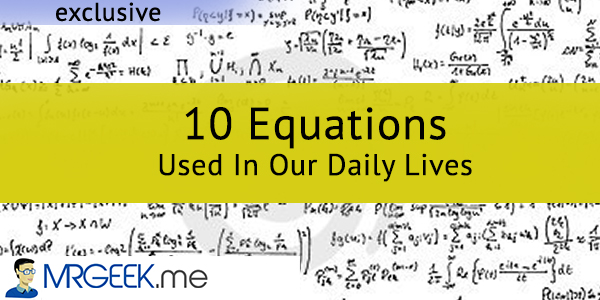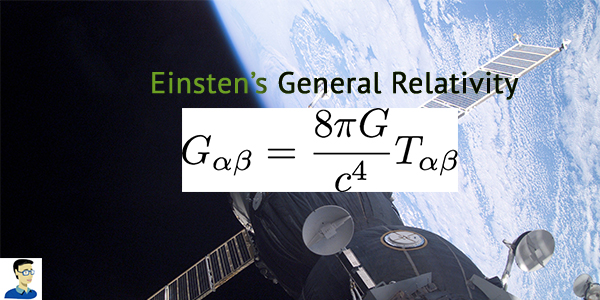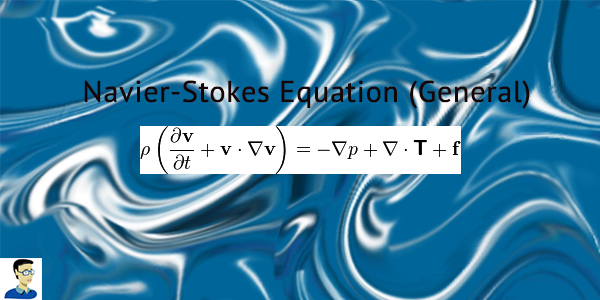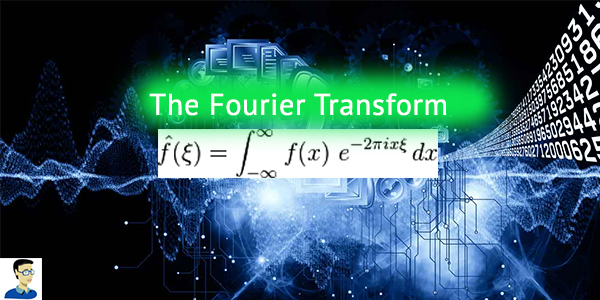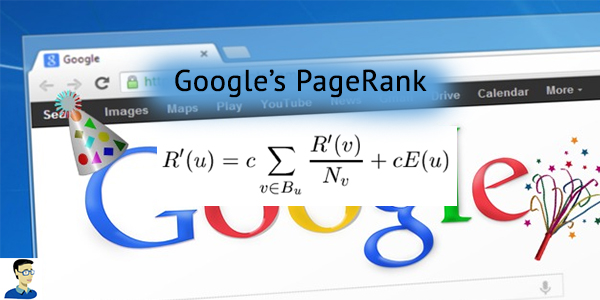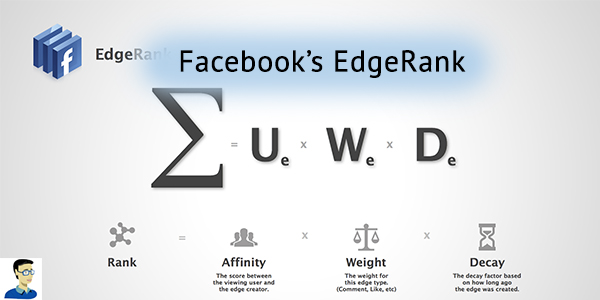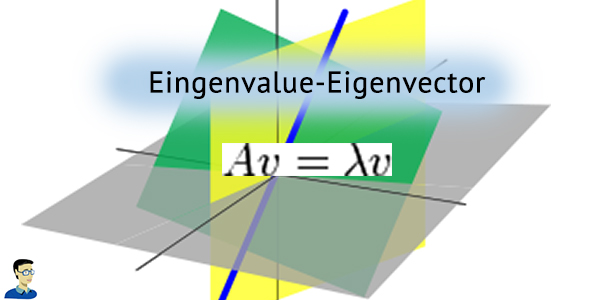Equations. Don’t we all just love them. We find them in our everyday lives. We study them and use them. Now, may I request you to embark with me upon a short journey into the world of equations that rule our everyday lives. Grab a cup of coffee, this is a long 2,500 word read.
I come from the world of science and engineering, so do realize that I might be inclined towards the discipline of science. I hereby request your apologies in advance in case I miss something from the other disciplines, but I will try my best to incorporate everything that I personally know.
Do realize that I am going to write a series if you guys could come up with updates, additions etc. I might add that this list is not exhaustive and in no particular order. Also, I haven’t included Newton’s laws of motions (they are important) because you deserve to know something newer, right?
Do note that through out this article, I will include generalized equations, but remember, in the real world, it’s not just that easy. There are tons of things that happen at the backend. It’s really not as simple as e=mc(square). However, you should understand that these equations are really the crux of the matter at hand.
1. Einstein’s Equation of General Relativity
Einstein’s equations are only for pure physicists? If you think that,then you’re wrong. They are actually used by us in our everyday lives. Without them, we wouldn’t be able to synchronize the clocks on a satellite and planet earth. Einstein’s equation of general relativity is the answer. In other words, satellite navigation systems like GPS (Global Positioning System) or GLONASS (Russian) practically use Einstein’s equation of general relativity for time keeping and positioning.
The idea behind it is simple. To be in sync, the two clocks on planet earth and the satellite require ticking at different rates, due to their different motions and positions within the Earth’s gravitational field. This idea is predicted by special relativity. To sync the satellite clocks with earths’, they have to be slowed down by a ‘relative factor’. It’s a lot more complex than that, but you get the idea. So when you open up Google Maps to find out a nearby Pizza restaurant, thank Einstein instead and probably, if you somehow figure out how to build a time machine, buy him one.
2. Maxwell’s Equations
I love science and it’s natural for me to read up stories about my heroes. Once, I read that Einstein personally regarded Maxwell to be greater than him and he loved him so much that he pinned a picture of Maxwell on his desk board. Myth or not, we know Maxwell was a genius. Maxwell’s equations (yes, 4 different equations) are one for the history books for millennia to come.
Let’s get to the crux of the matter. Maxwell’s equations are used in our daily lives. Think of electro-magnetism and you are automatically using Maxwell’s work. Motors, transformers, dynamos, you name it. Maxwell is secretly helping them work. Einstein’s special theory of relativity too owes something to Maxwell’s discovery of electro-magnetism. Well, even Fiber Optics uses Maxwell’s Equations. You do know Fiber Optical cables are used to connect the world, and hence the Internet.
3. Navier-Stokes Equations
You’re really loving this blog post aren’t you? I know. Let’s get to number 3. Navier-Stokes equations are not well known beyond the world of science and engineering. But they are very very important. Without them, we wouldn’t be able to measure/model weathers, water flow, fluid dynamics and hell, it’s even used in games.
In fact, Navier-Stokes equations are heavily used in games to create natural phenomena like movement of fluid. Next time you marvel at that flowing water in GTA-5, do realize that Navier-Stokes equations are playing a part somewhere in there. But not just water, they are used for smoke and fire modeling too.
4. Fourier Transform
I have been having a really fun time here at university learning about application of the Fourier Transform in Digital Signal Processing. Hundreds of years ago, a genius Frenchman by the name of Joseph Fourier came around and created an equation that allows you to transform a wave from its time-domain to its frequency-domain. I should also point out that the Fourier Transform works with the Fourier Series, which itself is a wonderful idea. It allows you to break a tangled wave into it’s constituent components, because every wave is a sum of it’s sine parts. It’s super elegant.
So many years later, enter the information age and boom, humans realized the importance of the Fourier Transform and the related Fourier Analysis in general. This equation is so important that you literally use it everyday. I mean it, without it, you wouldn’t have compressed audio, image and video. Thanks to Joseph Fourier, you are able to watch a Youtube video efficiently and quickly, which otherwise would be so huge, it’d be a problem transmitting it over to your computer. MP3s, JPEGs, etc. Yes, you are using the Fourier Transform. In a nutshell, this equation is used in every single digital compression scheme. For the geeks out there, I am talking of the DCT (Discrete Cosine Transform), which is primarily used in JPEG and MP3.
Let’s talk a bit more about how it really works. See, you have a bunch of waves and it’s hard to play around with them, do stuff with them and just understand them better. The Fourier Transform simply transforms waves from its time-domain into it’s frequency domain. So, the X axis now has frequencies instead of time. Breaking waves into a group of frequencies allows you to do lot’s of cool things. For example, once you have a frequency domain of a raw music file, you could throw away the frequencies that aren’t heard by the human ear. This is how compression works. Human ears are more sensitive to lower frequencies, so you essentially throw away the higher frequencies and there’s hardly any difference per auditory perception.
Audio-geeks would say otherwise, yes, it is indeed a lossy compression, but you can’t hear it. The point is, the idea of compressing the file and saving 90% of the disk space far outweighs anything else. Some would say .wav (uncompressed) files are better than .mp3s but you can’t really hear the difference unless you have expensive high fidelity audio devices. Alternatively, you can compress MP3s at higher bit rates to do the trick. Also, if you’ve seen an equalizer with those bars going up and down, that’s the Fourier Transform at work. The Fourier Transform is prevalent in Multimedia.
5. Shannon’s Entropy
Those coming from the world of Physics and Chemistry, please forget your entropy for a second. This is Shannon’s Entropy, the guy who is called the Father of the Information Theory. Shannon was an American polymath who touches our everyday lives in many ways, from digital circuits, to security systems, to video compression to anything that has to do with information and data. The Shannon’s Entropy equation is very important because it lies at the core of information theory. Entropy is simply the amount of information content contained in a message. Entropy is measured in bits and it is the prevalent theme in all of information sciences.
Shannon’s Entropy equation is used to tell us how much can we compress a thing, because there’s a limit, known as the entropy limit. How is this equation used by us in our daily lives? Well, Shannon’s entropy concept applies in all of compression schemes like Mp3 or ZIP/GZIP files, but other uses are in cryptography, and it’s direct relation with the RSA algorithm, which we will discuss next.
6. The RSA Algorithm
Many years ago, three guys, called Rivest, Shamir and Adelman came up with a set of equations, now known collectively as the RSA Algorithm. It is known that C. Cocks at GCHQ (in UK) figured out the same thing a few years earlier only to keep it a secret. Well, no worries, because the RSA algorithm, as we now know it is used by us in our everyday lives. Whenever you make an online payment or connect to Facebook, do you note that green bar at the top which says SSL or HTTPS.
That is a certification that a particular website is secure and that it uses SSL, (Secure Sockets Layer). To cut this short, SSL is a security mechanism to encrypt data between two computers over a network. Therefore, RSA is an algorithm that simply makes sure no one in the middle figures your credit card info. Simple as that. RSA is the most used piece of software in history. It is used in everything that requires security and contains valuable piece of information. Imagine this powerful thought in your head right now. You have a friend Bob who wishes to send you some secret information. You have a public key that you hand him over when you meet him next time.
He uses that public key to encrypt his message and sends that jumbled up message over to you. You have another key called the private key (and you but no one else has this key). You use the private key to decrypt the secret message. Magically, the jumbled up information is suddenly transformed into a piece of english. Now, a robber steals Bob’s public key while he was away at KFC for lunch. Ha, a problem? No, because only you can decrypt a message since you have the private key. The idea behind this is so elegant + simple and with our long 2048 bit RSA keys in use now, it is impossible for any supercomputer to break it. For the geeks out there, I am talking about prime factorization. RSA is secure because machine’s incapability to factorize large prime numbers. In fact, most of the computer security discipline revolves around this idea.
7. Pythagoras Theorem
I am pretty sure you were expecting this weren’t you? Remember that fancy Pythagoras from Greece who figured out a way to calculate the side of a 90 degree triangle given the two sides. It’s so easy to calculate it and probably even easier to understand how and why would it be used in our daily lives. Well, for one example, it is used to calculate the epicenter of an earthquake, but for a more daily-use example, I present to you ‘triangulation’. Triangulation is used to calculate the location of a point by measuring angles to it from other known points.
So, Pythagoras theorem plays an important role in positioning systems like GPS and even in telecommunications. Cellphones can be traced to their accurate locations using triangulation. In other words, when you are moving inside a large city, Pythagoras theorem can be used to triangulate your position on a plane and assign you the nearest cellphone tower to communicate to. It happens so fast you don’t realize it, but it works. That’s science!
8. Google’s PageRank
Google uses a plethora of features and algorithms to calculate a website’s ranking. But their most known algorithm is a simple equation called the PageRank Algorithm. Believe me, I’ve done the linear algebra to explore it, it’s pretty simple and interesting. The idea behind it is nodes and edges. Wait, you haven’t learnt graph theory, so I’ll use simple words. Think of nodes as webpages and think of edges as links. Google’s PageRank models the inner influence of a webpage by looking at the incoming links towards it from other nodes, and further looking at the the incoming links coming from those nodes.
The concept behind it is so simple that you can relate the links to votes. Every webpage on the web is voting every other webpage when they link to each other. That’s why back links from better sites count more than from crappy sites. This is exactly because of the PageRank algorithm. It’s very natural to think of it as this way: a webpage is more influential if it receives a vote from another 2 influential webpages than if it receives 10 votes from super cheap webpages. PageRank models the internal influence of each nodes and this importance mass gets transmitted to every node that connects to each other. Thanks to PageRank, you get to see the sites you want to see up there in the top 10 of the search results page. It saves you time and gives you the best piece of information that you were looking for. It’s super useful.
9. Facebook’s EdgeRank
Ah, it’s 6 am here in London and I’m already beyond my emergency limit of 2000 words for this article. If you’ve come across this far, you’re a true geek. I love sharing my knowledge so I will try my best to keep the last two equation discussions simple and short. Okay, this is the Facebook’s EdgeRank formula that’s used in it’s Newsfeed to show you to most relevant, interesting content. It takes into account three things, but I am sure Facebook uses more features. The equation itself is simple and revealing as to what’s happening inside. Remember when you’re addicted to the Newsfeed for hours, blame EdgeRank because it works very well and models social phenomena accurately.
10. Eigenvalue and Eigenvalue equation in Linear Algebra
The Av=lambda(v) equation is used for calculating Google’s PageRank (the PageRank vector is the Right Eigenvector), which we talked about earlier. You already now have it’s usage in the real world. But if you want to know more, here are a few things on how eigenvalue and eigenvectors are used in our everyday lives. Firstly, it’s used in stability analysis, so if you have ever been on a vehicle today, it’s being used there. I won’t go in the details (because I am not a physicist but rather a computer scientist), but I assume it has to do with the oscillations of the vehicle. Secondly, the equation finds its importance in image recognition, by the field of principal component analysis. It’s used to detect faces, edges and everything where computer vision takes place.
Conclusion
Now, as you might be smart enough to realize this, these important equations rule our everyday lives with other lesser known equations ‘in conjunction’. They are important too, but I discussed the ones that form the crux of the matter, the ones that were mind boggling when they were first introduced and the special people behind them. I pay tribute to all the 10 folks who have made me love science. Thank you. To close, I’d love to say that science, math, engineering and technology works by tying smaller components to give us the final picture, like a jigsaw puzzle. But I hope I have made you think again before you say that some equations have no practical uses. You now know, they have.
Ha, would Joseph Fourier have known back centuries ago that his equation and his analysis techniques would be used in telephony, video-conferencing, and what not in the world of multimedia. I am sure there are equations in the world of quantum physics that lie unrealized until now, but wait, and many years later, they will be used by our future generations. I would love to end with this post with a quote by Goethe who said “By seeking and blundering we learn”.
About Ali Gajani
Hi. I am Ali Gajani. I started Mr. Geek in early 2012 as a result of my growing enthusiasm and passion for technology. I love sharing my knowledge and helping out the community by creating useful, engaging and compelling content. If you want to write for Mr. Geek, just PM me on my Facebook profile.








